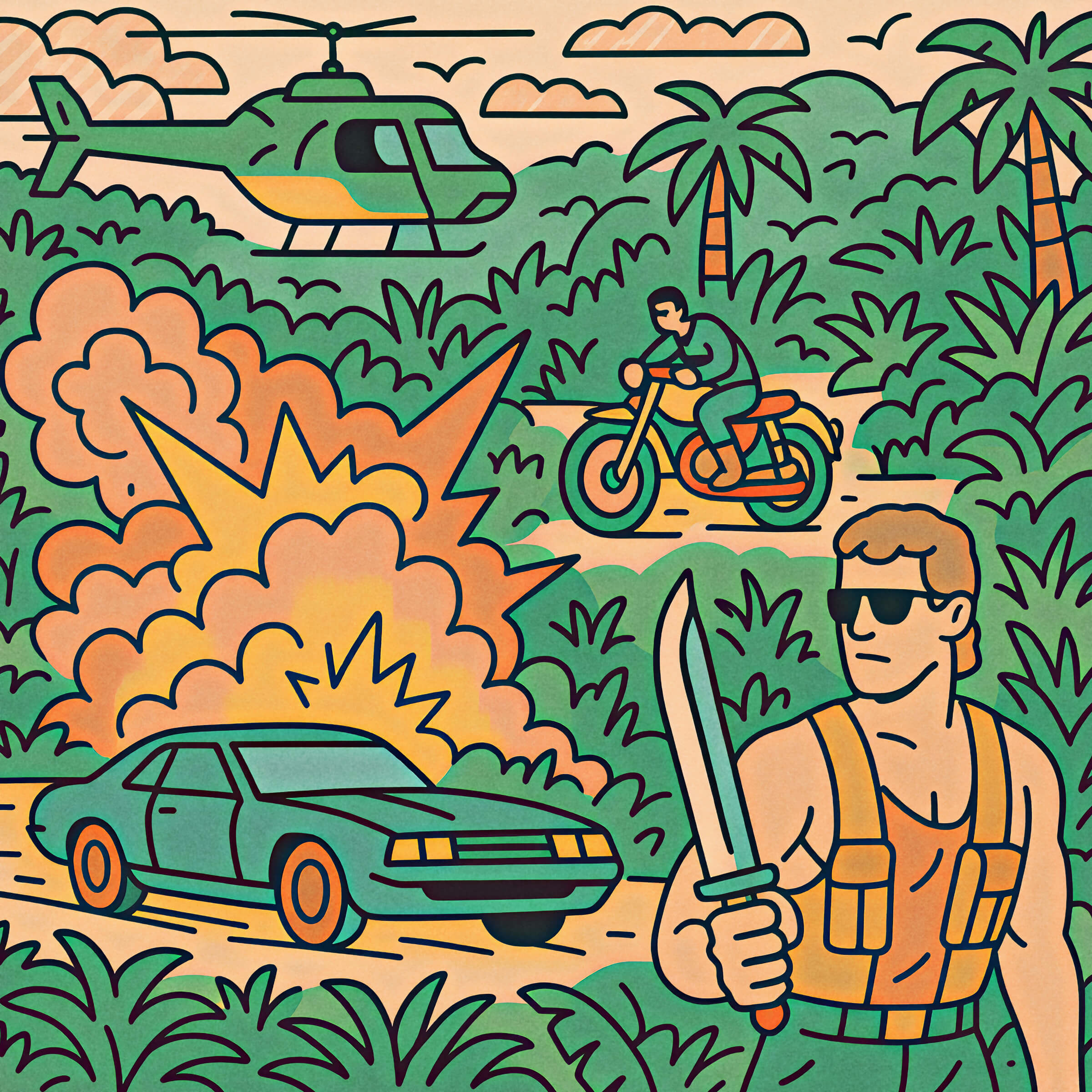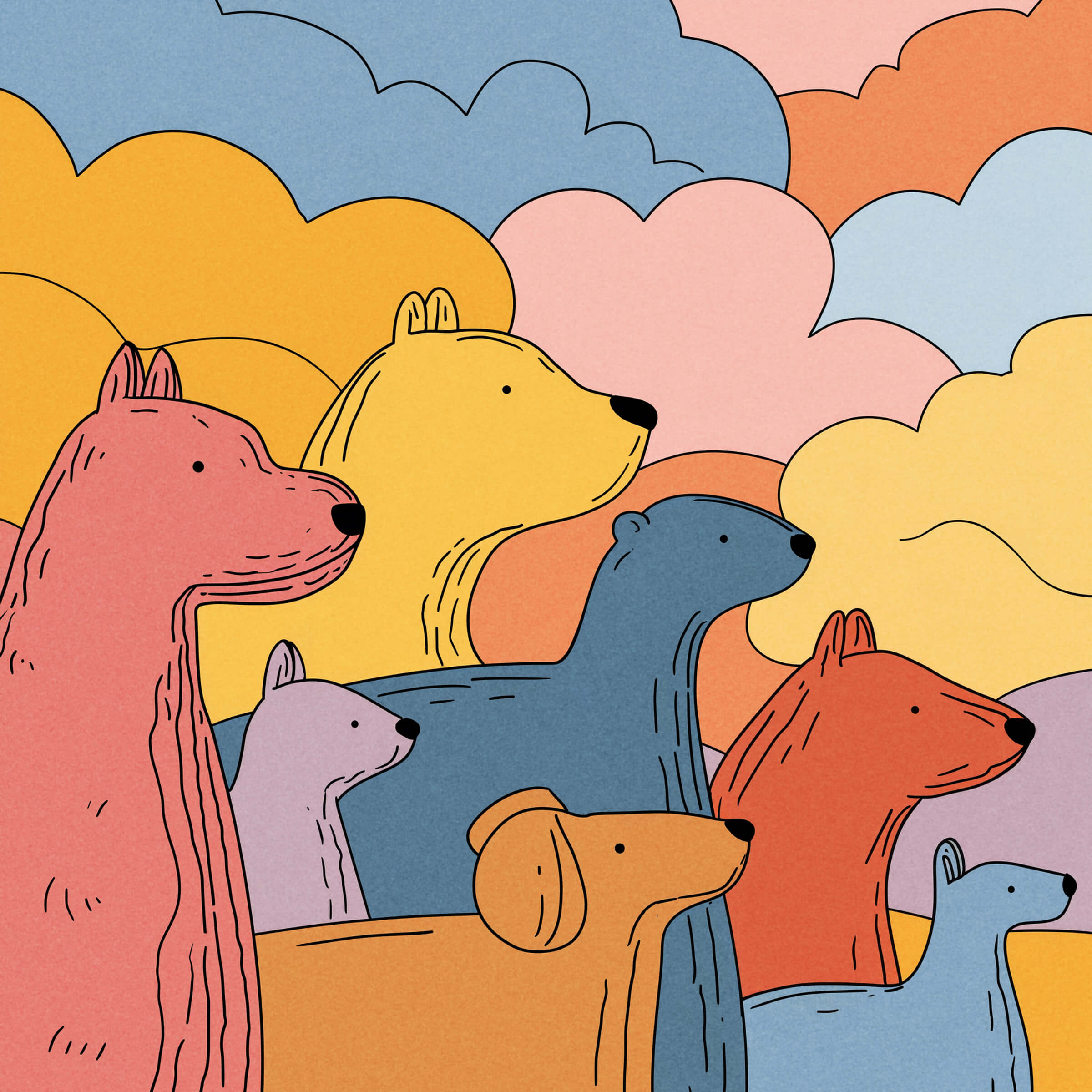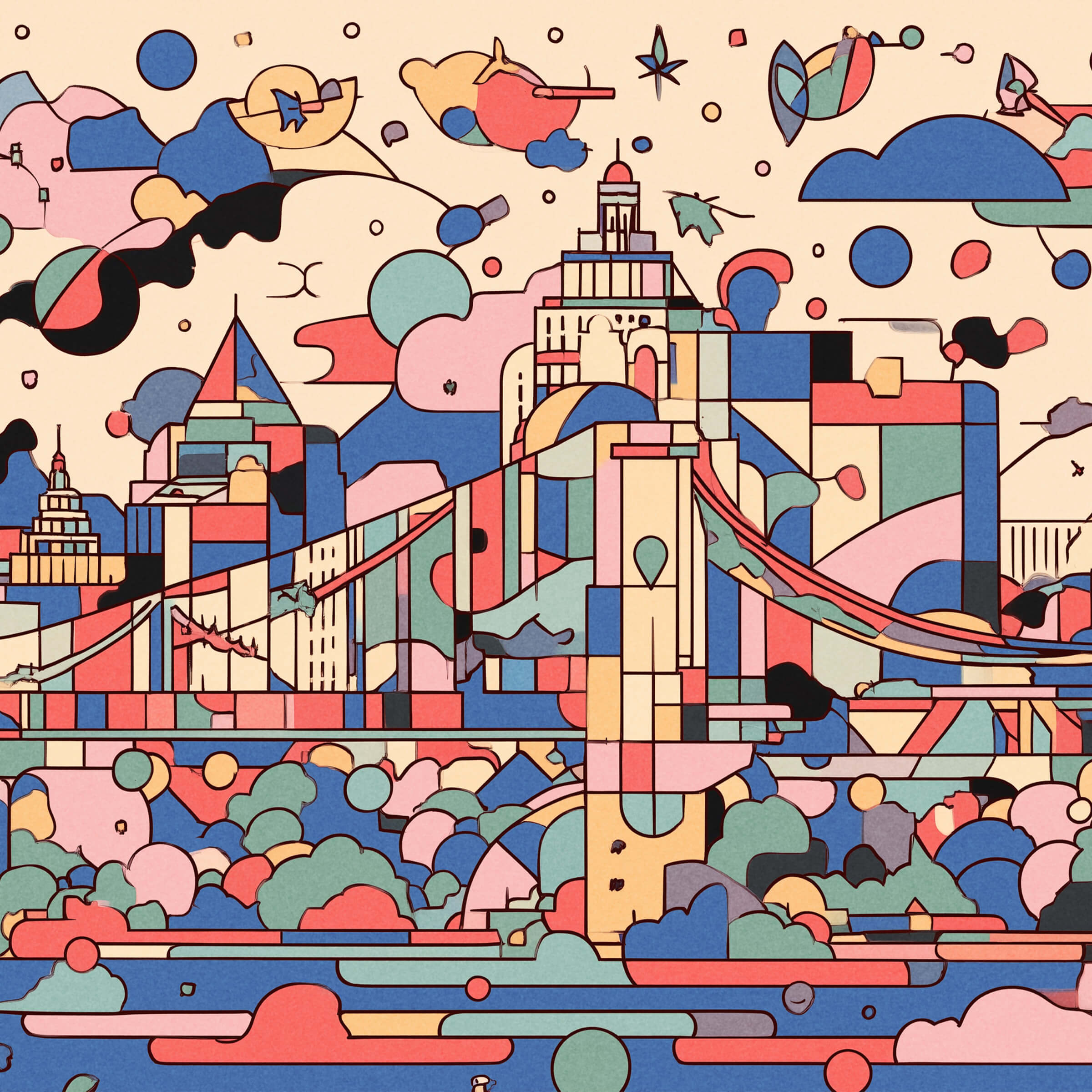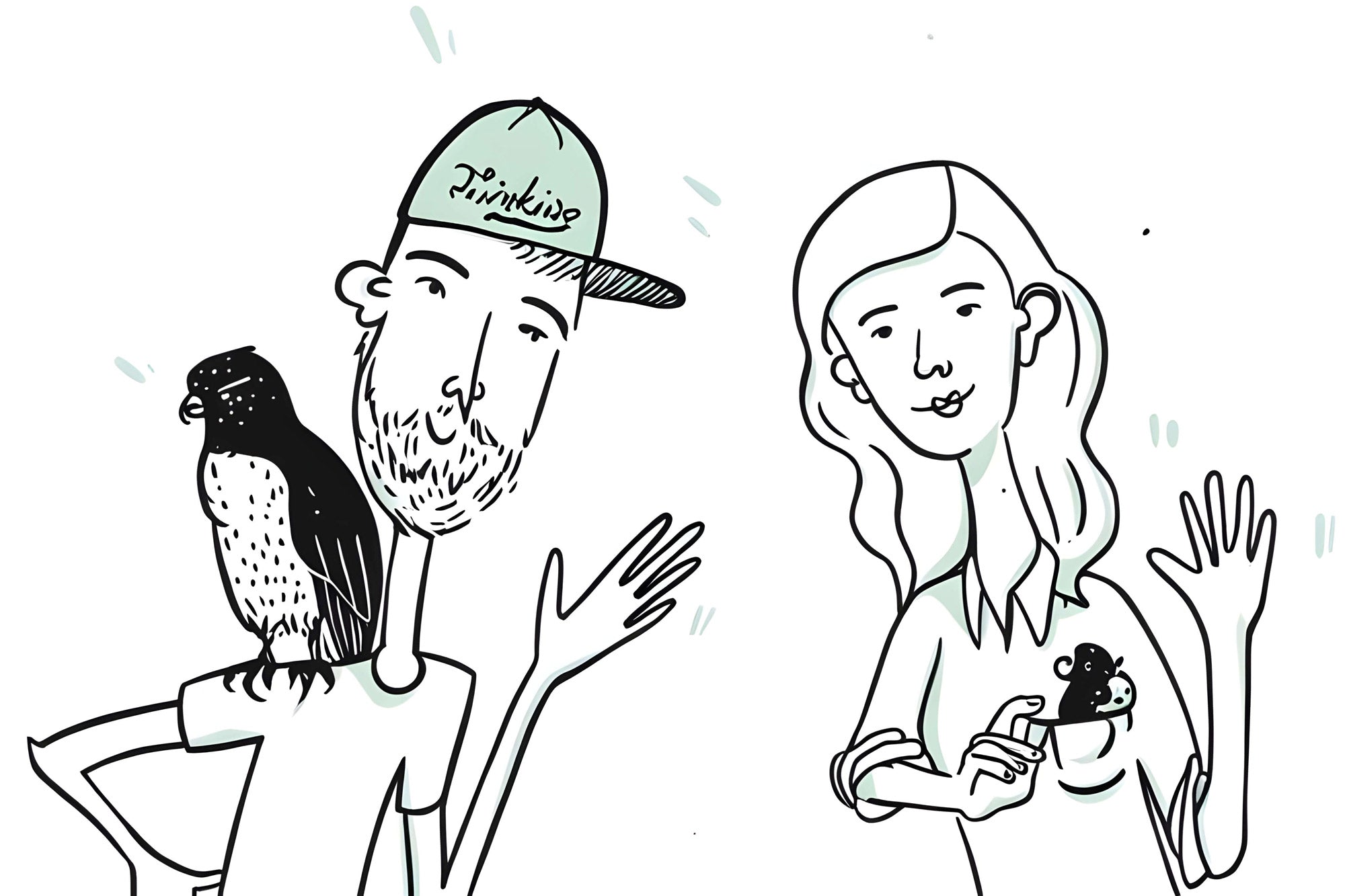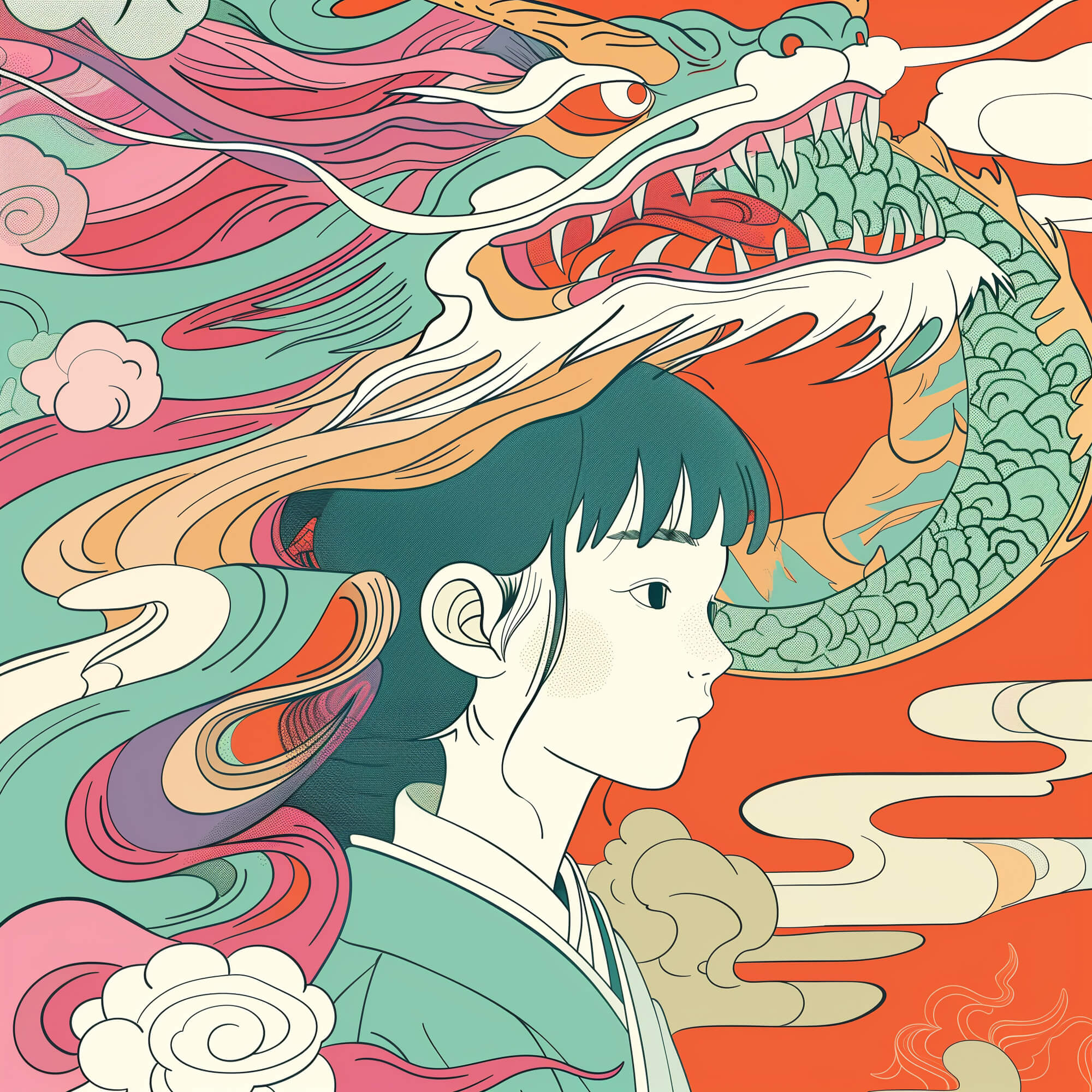
Studio Ghibli Fun Facts: 20 Magical Secrets from Anime's Dream Factory
Studio Ghibli: the animation powerhouse that turns dust bunnies into cult icons and makes forest spirits more relatable than your average politician. Founded in June 1985 by the triumvirate of Hayao Miyazaki, Isao Takahata, and Toshio Suzuki, Ghibli emerged like a particularly stubborn radish from the success of "Nausicaä of the Valley of the Wind." Yes, "Nausicaä" wasn't officially a Ghibli anime production, but it's included in the canon.
This post is your definitive Ghibli guide. It's stuffed with obscure facts to impress that person you're trying to woo at the local anime convention. We've also included a complete list of Ghibli films, because nothing says "I have my life together" quite like encyclopedic knowledge of Japanese animation. So, grab your least comfortable chair and prepare to become the most casually pretentious Ghibli expert in your zip code.
1. Studio Ghibli's mascot, Totoro, appears hidden in multiple Ghibli films.
Totoro can be spotted as a stuffed toy or subtle background element in films like "Kiki's Delivery Service," "Pom Poko," and "Whisper of the Heart." This playful easter egg delights fans who enjoy searching for these hidden Totoros!

2. The name "Ghibli" comes from an Arabic word for sirocco, which means “hot desert wind” or “Mediterranean Wind”
Hayao Miyazaki chose this name, pronouncing it with a soft 'g' (ji-bli), as he wanted the studio to "blow a new wind through the anime industry." The term was also used for an Italian scouting aircraft, which appealed to the aviation-loving Miyazaki.
3. Studio Ghibli has a strict "no-cuts" policy for international releases of their films.
When Harvey Weinstein suggested editing "Princess Mononoke" for its U.S. release, Studio Ghibli producer Toshio Suzuki sent him a katana with a message: "No cuts." This policy ensures the artistic integrity of Ghibli films worldwide.
4. The studio maintains a children's daycare center for employees' kids.
This facility, called "Koro-no-ie" (Daddy's House), opened in 2011 to support working parents at the studio. It reflects Ghibli's family-friendly ethos and commitment to work-life balance. Oh, and they also offer their animators free massages on Saturdays.
5. Hayao Miyazaki doesn't use storyboards for his films, often developing the story as animation progresses.
This unique “jazz improv” approach allows for more organic storytelling but can be challenging for the animation team. Miyazaki often doesn't know how his films will end when he starts them.
6. Studio Ghibli's first film, "Castle in the Sky," contains a hidden message in Morse code.
During the airship chase scene, a Morse code message can be heard that translates to "Shoot them down quickly!" It's like Ghibli's version of a subtweet, but with more beeping. This detail adds depth to the scene and showcases Ghibli's attention to detail, proving that even their background noise has a backstory.
7. The studio has a secret attic called "The Forbidden Room" filled with production materials.
It's less "Chamber of Secrets" and more "Attic of Artistic Treasures." This room contains original concept art, storyboards, and other materials from past productions. Access is highly restricted, making it the Fort Knox of animation memorabilia. One can only imagine the epic dust bunny battles taking place in there.
8. Ghibli films often feature characters inspired by real people in the animators' lives.
Turns out, Ghibli animators are the ultimate people-watchers. The character Mei in "My Neighbor Totoro" was inspired by Miyazaki's niece, while Kiki from "Kiki's Delivery Service" was based on his friend's daughter.
9. The studio once created a life-sized Catbus from "My Neighbor Totoro" for children to play in.
This massive Catbus was displayed at the Ghibli Museum in Mitaka, Tokyo, bringing new meaning to the phrase "public transportation." Specially designed for children under 12 to explore, it's probably the only bus in the world that kids actually want to ride. Unfortunately, it doesn't actually fly or teleport.
10. Hayao Miyazaki hand-draws thousands of frames for each film he directs.
Despite being the director, Miyazaki is known for his hands-on approach, often drawing key frames himself. For "The Wind Rises," he reportedly drew 100,000 frames. That's dedication, or perhaps a severe case of not trusting anyone else with a pencil. Either way, it's impressive.
11. Studio Ghibli's films have influenced numerous Western animators and filmmakers.
Pixar's John Lasseter, in particular, has cited Miyazaki as a major influence. He even helped introduce Ghibli films to Western audiences by overseeing their English dubs with the folks at Disney. Thanks John!
12. The studio briefly ventured into video game development with "Ni no Kuni."
While primarily known for films, Ghibli collaborated with Level-5 to create the visuals for the video game "Ni no Kuni," bringing their distinctive art style to an interactive medium. The original 2010 game has spawned a full series (including mobile games). This RPG is known for beautiful animation, obviously, and engaging story. The wunderkins at Ghibli assisted with the animated sequence, art design and music.
13. Studio Ghibli uses traditional hand-drawn animation for the majority of their films.
In an era dominated by computer animation, Ghibli steadfastly maintains the use of hand-drawn techniques. Even their most recent films are primarily created using traditional methods and CGI is used for no more than 10% of any film.
14. The studio has a policy of giving employees time off to watch cherry blossoms bloom.
This practice, known as "hanami," is deeply rooted in Japanese culture. Ghibli's observance of it reflects their commitment to preserving traditions and appreciating nature.
15. Studio Ghibli's films often contain anti-war messages, reflecting Miyazaki's childhood experiences.
Miyazaki, born in 1941, grew up during World War II and its aftermath. This influenced many of his films, which often carry subtle or overt anti-war themes, promoting peace and environmental conservation. It is pretty neat that Miyazaki fights battles with beauty and story instead of weapons.
16. Many Studio Ghibli films contain interconnected Easter eggs and references, suggesting they might share a common universe.
For example, the cat figurine "The Baron" from "Whisper of the Heart" appears in "The Cat Returns." It's like a cinematic game of Six Degrees of Separation, but with more whimsy and fewer Kevin Bacons. These connections have sparked countless fan theories about shared universes.
17. At least 13 of the Ghibli movies were adaptations of books and mangas.
Ghibli has a knack for turning words into worlds. Notable examples include "Kiki's Delivery Service" (1989) based on Eiko Kadono's children's novel, and "Howl's Moving Castle" (2004) adapted from Diana Wynne Jones' novel. Even Miyazaki himself got in on the action, with "Porco Rosso" and "The Wind Rises" based on his own manga.
18. The miners in Castle in the Sky were based on the famous miner’s strike in Wales in the 1980s.
Miyazaki visited Wales several times and was influenced by the strike, writing it into the main town from Castle in the Sky. It's proof that Miyazaki can find inspiration anywhere, transforming a Welsh labor dispute into a fantastical floating city. Bonus fun fact: The city (named: Laputa) was named after the floating city in Jonathan Swift’s epic novel Gulliver’s Travels.
19. Seven Ghibli films are among the 15 highest grossing anime films of all time.
Spirited Away takes the cake as the 2nd highest grossing all-time (number 1 is Demon Slayer: Kimetsu no Yaiba). In terms of Ghibli films, here’s the rankings in terms of $$$ moola in the box office:
- Spirited Away (2001)
- Howl's Moving Castle (2004)
- Ponyo (2008)
- Princess Mononoke (1997)
- The Wind Rises (2013)
- Arrietty (2010)
- Tales from Earthsea (2006)
- Kiki's Delivery Service (1989)
- My Neighbor Totoro (1988)
- From Up on Poppy Hill (2011)
20. Studio Ghibli partnered with Disney to release its films in the US, and had the first PG-13 animated film that Disney ever distributed.
The film was 2006's Tales from Earthsea and was given the rating due to some violent images. Yup, Ghibli crashed Disney's perpetual G-rated party with a slightly edgier guest. This partnership brought Ghibli's unique storytelling to a broader audience, proving that magic can transcend cultural boundaries.

Answers to your obvious Studio Ghibli questions:
Where can I watch Studio Ghibli movies?
You can watch Studio Ghibli movies on a variety of streaming services, though they tend to come and go due to licensing agreements. Amazon is a good bet if you want to pay to rent them. That said, this author's favorite spot is to get them from your local library (Blu Ray style). You might also consider if you like subtitles. If so, watch them in the native language! If that isn’t your jam, the English dubbed versions are still very well done (thanks Disney). Most Blu Ray’s will have both!
What are the best Studio Ghibli movies?
The best Studio Ghibli movies, based on ratings, is below. However, a question like this is SO subjective… their films are imaginative, emotional, riddled with allegory and beautiful to look at. That just means that some might resonate more than others to anyway. Keep that in mind if you’re looking to get into Ghibli films! There is no wrong answer. That said, here’s an official ranking:
- Spirited Away (2001)
- My Neighbor Totoro (1988)
- Princess Mononoke (1997)
- Grave of the Fireflies (1988)
- Howl's Moving Castle (2004)
- Kiki's Delivery Service (1989)
- Castle in the Sky (1986)
- Nausicaä of the Valley of the Wind (1984)
- The Wind Rises (2013)
- Whisper of the Heart (1995)
- The Tale of the Princess Kaguya (2013)
- Ponyo (2008)
- Only Yesterday (1991)
- The Secret World of Arrietty (2010)
- When Marnie Was There (2014)
- Porco Rosso (1992)
- From Up on Poppy Hill (2011)
- My Neighbors the Yamadas (1999)
- Pom Poko (1994)
- Ocean Waves (1993)
- Tales from Earthsea (2006)
- The Cat Returns (2002)
- Earwig and the Witch (2020)
How many Studio Ghibli movies are there?
There are 23 Studio Ghibli films beginning with Castle In the Sky (1986). Sorry, Nausicaa and the Valley of the Wind is proto-Ghibli and not officially a Ghibli film. However, it is arguably what started the fun and the studio was made after the success of that film. Here is the full chronology, including year, director and even production side-hustles:
- Nausicaä of the Valley of the Wind (1984) - Hayao Miyazaki (Note: Technically pre-Ghibli, but often included in the canon)
- Castle in the Sky (1986) - Hayao Miyazaki
- Grave of the Fireflies (1988) - Isao Takahata
- My Neighbor Totoro (1988) - Hayao Miyazaki
- Kiki's Delivery Service (1989) - Hayao Miyazaki
- Only Yesterday (1991) - Isao Takahata
- Porco Rosso (1992) - Hayao Miyazaki
- Ocean Waves (1993) - Tomomi Mochizuki (TV movie, partial Ghibli production)
- Pom Poko (1994) - Isao Takahata
- Whisper of the Heart (1995) - Yoshifumi Kondō
- Princess Mononoke (1997) - Hayao Miyazaki
- My Neighbors the Yamadas (1999) - Isao Takahata
- Spirited Away (2001) - Hayao Miyazaki
- The Cat Returns (2002) - Hiroyuki Morita
- Howl's Moving Castle (2004) - Hayao Miyazaki
- Tales from Earthsea (2006) - Gorō Miyazaki
- Ponyo (2008) - Hayao Miyazaki
- Arrietty (2010) - Hiromasa Yonebayashi
- From Up on Poppy Hill (2011) - Gorō Miyazaki
- The Wind Rises (2013) - Hayao Miyazaki
- The Tale of the Princess Kaguya (2013) - Isao Takahata
- When Marnie Was There (2014) - Hiromasa Yonebayashi
- The Red Turtle (2016) - Michaël Dudok de Wit (Co-production with Wild Bunch)
- Earwig and the Witch (2020) - Gorō Miyazaki (Studio Ghibli's first 3DCG film)
- The Boy and the Heron (2023) - Hayao Miyazaki
Whew! That’s a lot of Ghibli knowledge. We hope you enjoyed this post and we look forward to seeing you at the next Studio Ghibli screening as part of the lovable Studio Ghibli Fest (yeah, we’re total nerds… is that a surprise?). We’d love to know what your favorite Ghibli film is, let us know over on Instagram.


